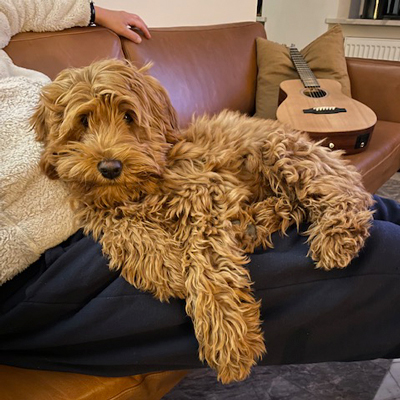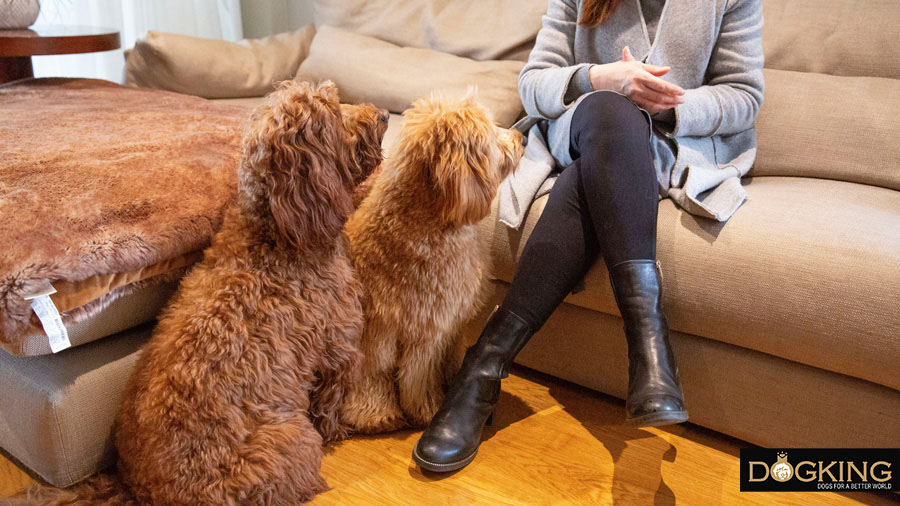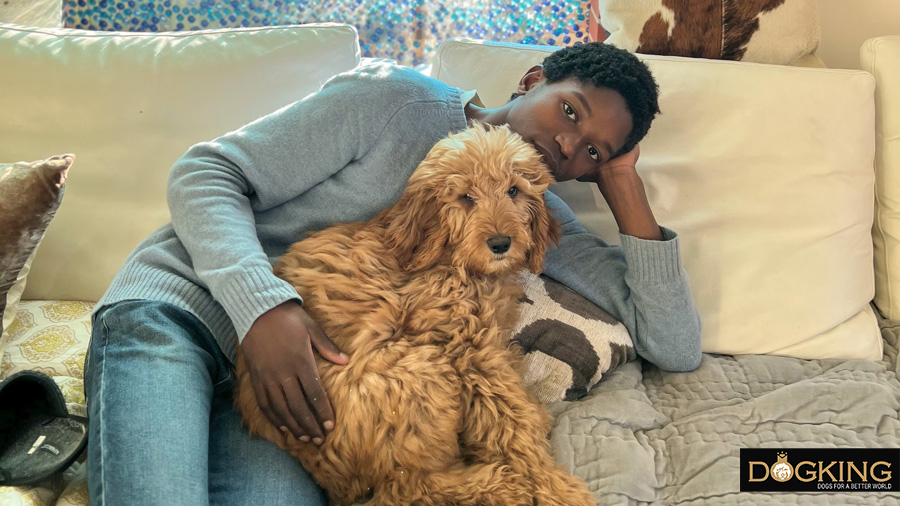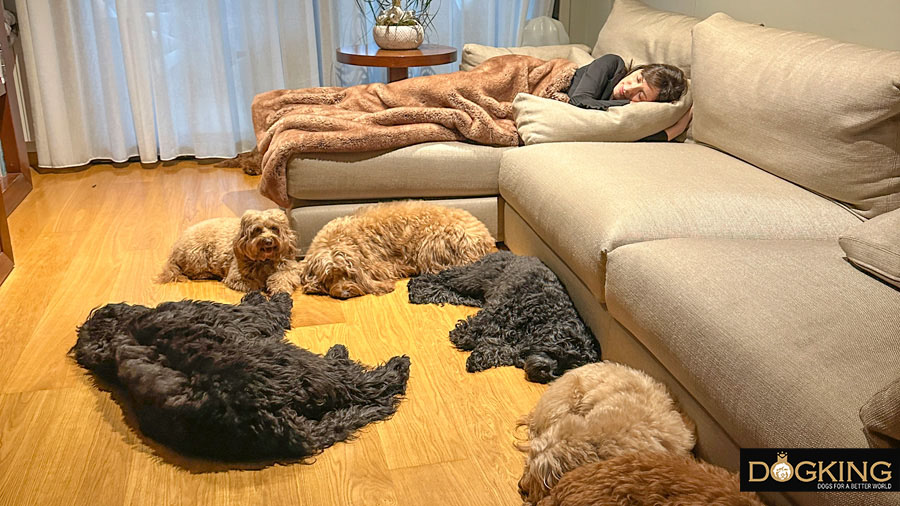Should you let your dog on the sofa?
Knowing when and how to set limits

GOOD BEHAVIOUR AT HOME
Reading time about 7 minutes
Enjoying a relaxing moment with your dog is one of the greatest pleasures that exist. But is the sofa a good place for it? Taking into account that we should avoid humanizing our dog, and that not all breeds have exactly the same instincts or temperament, the answer to this question will depend on the behaviours that may be triggered or have already been triggered in your dog.
In this article we explain when it isn’t advisable to let your dog on the sofa, what you should keep in mind if you do, and how you can prevent your pet from doing it again.

Table of contents
1- Is it good for your dog to climb on the sofa?
2- How to stop your dog from climbing on the sofa
3- What you should keep in mind if you share a sofa with your dog
Is it good for your dog to climb on the sofa?

The dominance problemSome owners, based on classical thinking, often fear that the dog will become dominant or possessive if it climbs on the sofa or bed. Dominance is simply the ability of an individual to control one or more resources. This makes the dog feel free to do whatever is most rewarding to it, believing that it has full possession of the resource. Although the reason for this isn’t to assume the role of leader within the pack, as is the case with hierarchy, seeing itself as dominant over certain factors, such as the sofa, may lead to bad reactions when it comes to denying them that they are their property.
How to stop your dog from climbing on the sofa
If we haven’t prevented it from going up, we should refrain from giving reinforcement to make the behaviour cease by extinction. It is worth remembering that not rewarding behaviour also means reinforcement, but in this case of what shouldn’t be done (negative).
And if your dog is already on the sofa, how do we get it off?
- If we want our dog to get off the sofa, we should accompany and guide it gently, trying to manipulate it physically as little as possible, since it is something it must learn to do by its own free will. Punishments and discipline aren’t the most favourable thing when teaching a dog, they will only open the way for us to emphasize a hierarchy that allows our furry friend to obey the signals.
- In addition, discipline should never be aggressive or involve the use of force, but should be shown through a firm tone and gestures that the dog associates them with behaviours that shouldn’t be carried out. The mere fact of removing it from the place where it wants to be, such as the sofa, for example, is already a type of punishment.
- Once down, we should reward it with some positive reinforcement (caresses, food or nice words) so that it sees that going down can bring it a reward. In case our dog doesn’t like being on the floor or isn’t used to it, we will provide it with a new resting place, either a bed or a cushion, but one that can replace the sofa. We will expose it to the object and once the animal gets on it, touches it or sniffs it, we will drop treats until our dog remains up and doesn't come down.
- Once it has been reinforced to lie on its new resting place we will teach it the "to your place" signal. We will do this as long as all its needs have been met beforehand (going for a walk, eating, etc.), as we can’t expect our dog to want to rest if it has spent the whole day at home, for example. We will have to be coherent and make the work easier for ourselves by balancing the dog’s energy levels and making it a fun and motivating experience for both of us.
What you should keep in mind if you share a sofa with your dog
Boundaries in canine behaviours
Why are they necessary?
The best sign of love that we can give them is to ensure their mental and physical safety, and to do this we need to set certain limits.The limits, if internalized from the time they are puppies, can accompany them throughout their lives and promote a harmonious coexistence with the rest of our society, just as they would do it with their pack. After all, allowing them to behave in ways that aren’t correct will only result in them not having the necessary understanding they need to feel accepted by other humans and dogs. As well as hindering their learning, climbing on the sofa may also be a hygiene problem, depending on the breed, due to the amount of hair your dog sheds, especially when there is someone with allergies at home.
When should we set limits?
It all depends, to a large extent, on the type of breed. Some will have in their DNA a greater predisposition to give allergies, or more dominant or possessive instincts that will make them more reluctant to get off the sofa against their will. So, if your dog's temperament tends to have difficulty in learning limits due to its type of nature, and it may show aggression in the face of a resource guarding, or if it belongs to a breed that tends to shed a lot of hair, the best thing to do is to assign your dog a new place to rest as an alternative to the sofa.

In the case of Australian Cobberdogs favoured with a temperament that is easy to teach due to their outstanding intelligence and hypoallergenic coat, they are the dogs to live with par excellence. Teaching them to get on or off the sofa won't be difficult, but quite the opposite, given their infinite desire to learn. And the important thing for them is the fact that they can be with you no matter where, making education an activity that both you and they enjoy, and that the sofa is something that ends up being in the background.